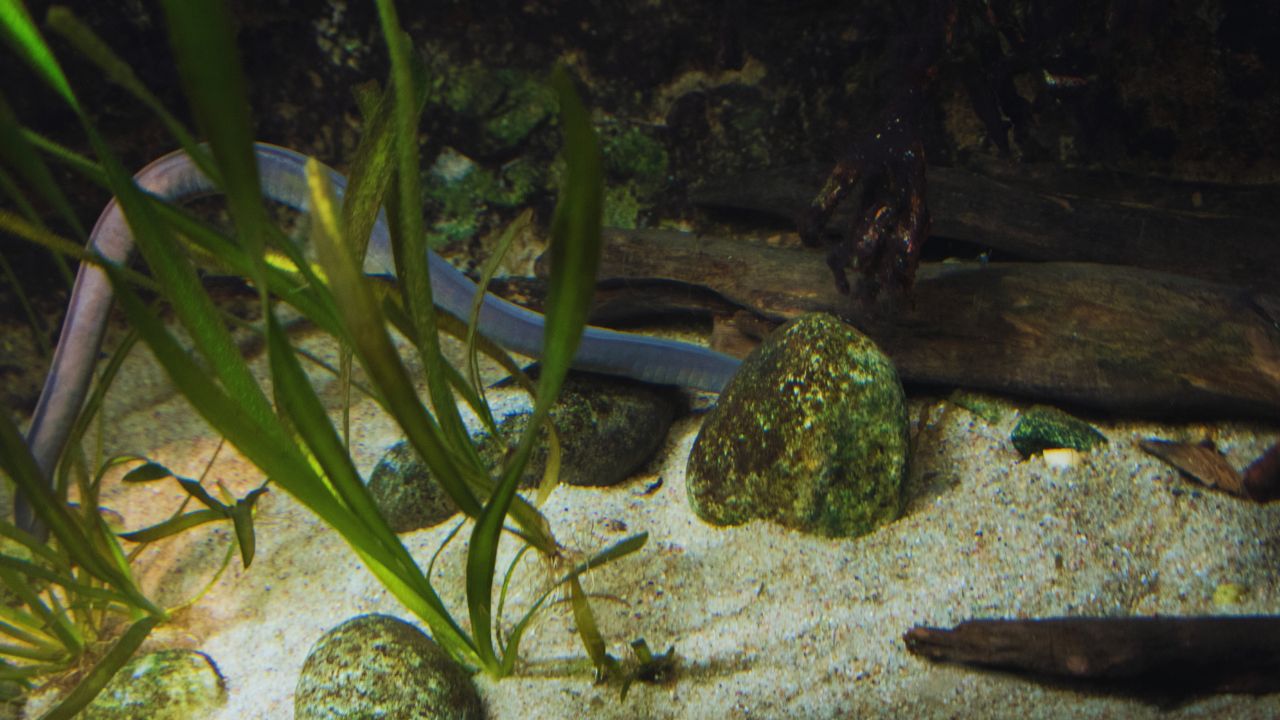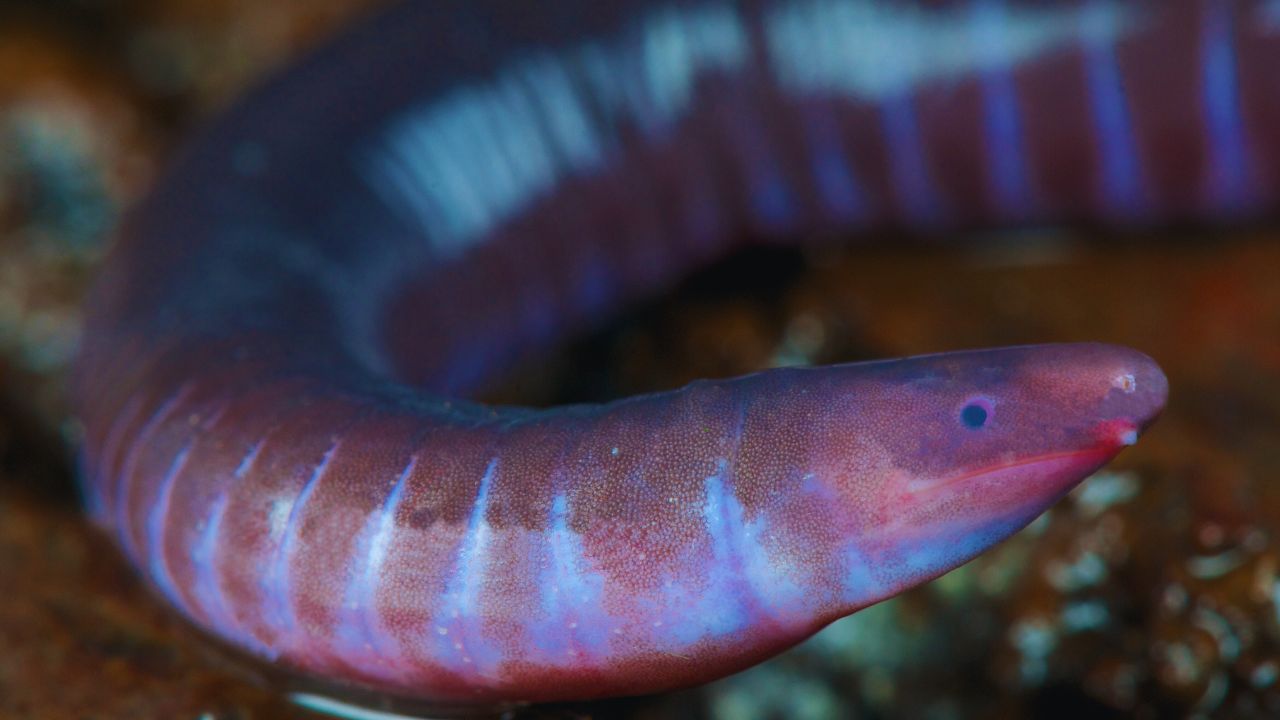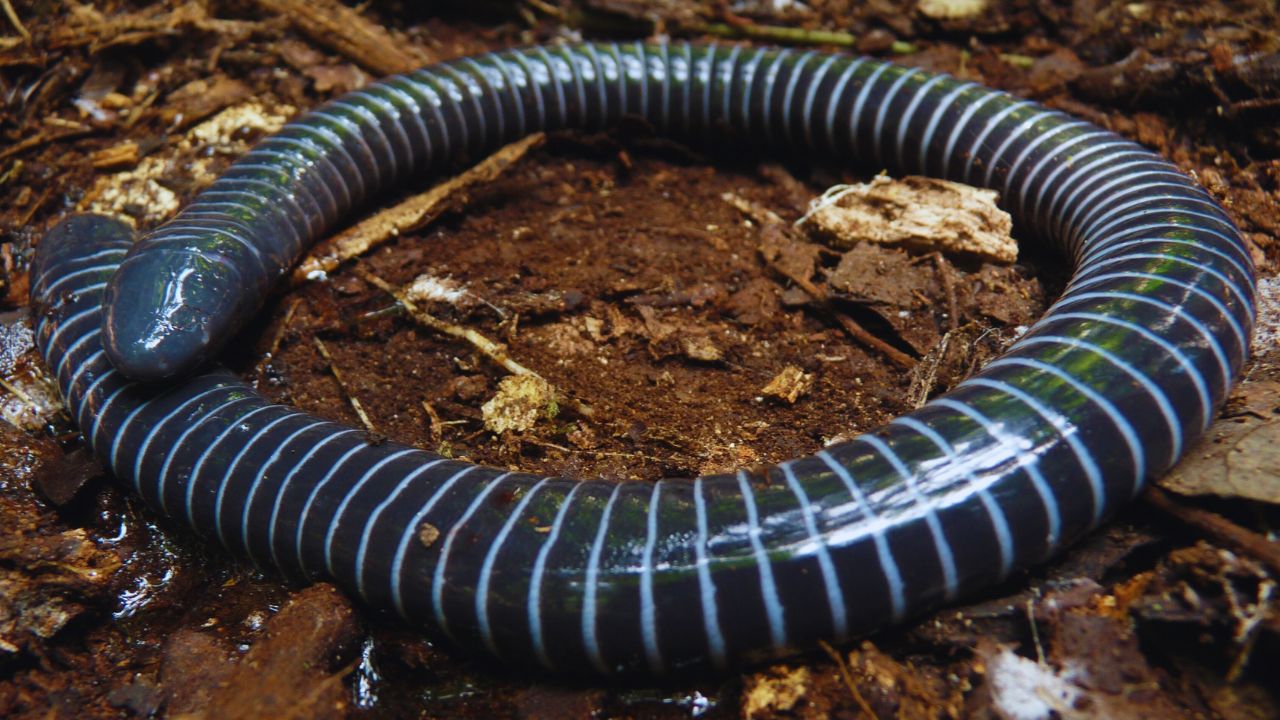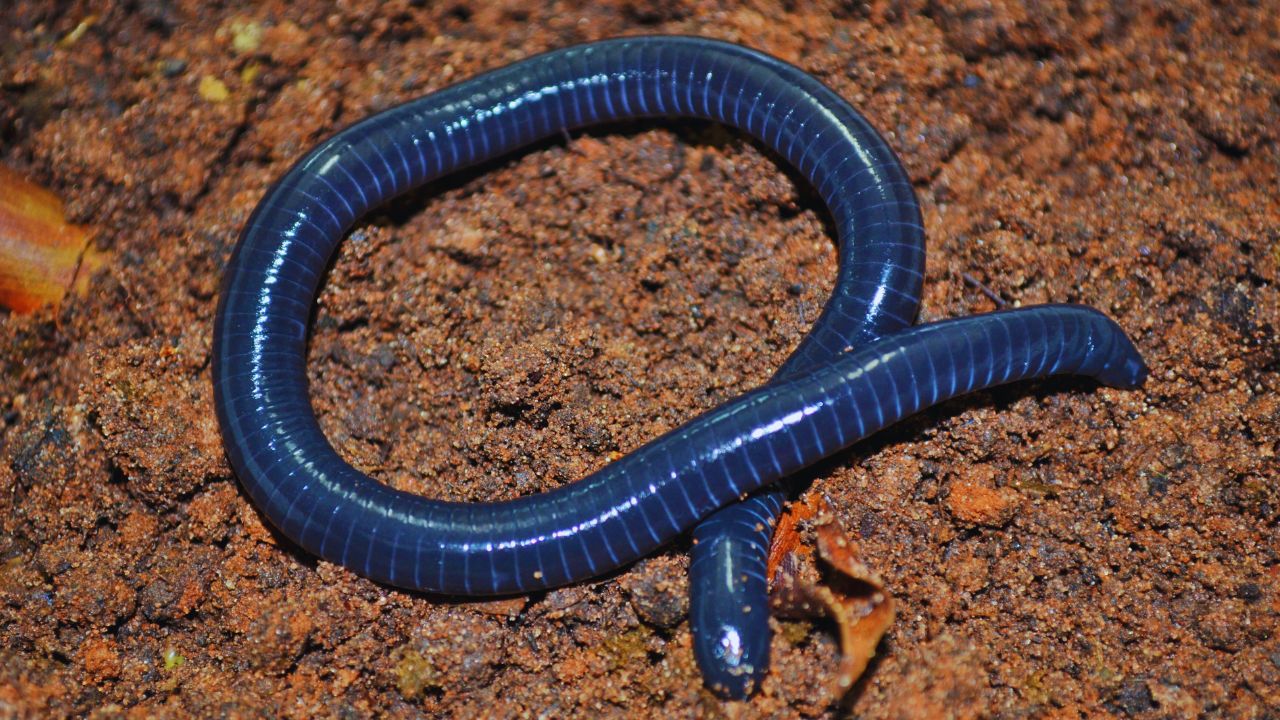Scientists have always been captivated and mystified by caecilians, mysterious and elusive amphibians. Of the three major families of amphibians, caecilians are the least well researched and understood, along with frogs and salamanders. These limbless, snake- or worm-like organisms spend solitary lives mostly beneath or underwater, which makes them difficult to view and study. Consequently, little is known about caecilians in science. This article delves into the obstacles that prevent thorough study and comprehension of these interesting species, examining five major explanations for why scientists know so little about caecilians.

Overview of the Challenges in Studying Caecilians
| Challenge | Description | Impact on Scientific Knowledge |
|---|---|---|
| Secretive and Elusive Habits | Caecilians are burrowing animals, spending most of their lives underground or within leaf litter, making them difficult to observe and study. | Limits direct observations of behavior, ecology, and life cycle; camouflaging in their environment makes them harder to detect. |
| Limited Geographical Range | Caecilians are primarily found in remote tropical and subtropical regions, which are often difficult to access and study. | Contributes to gaps in knowledge due to challenges in conducting field research in their restricted and remote habitats. |
| Challenges in Captive Study | Maintaining caecilians in captivity requires replicating specific environmental conditions, which is difficult and often leads to stress for the animals. | Limits opportunities for long-term study and observation in a controlled environment, hindering research on behavior and biology. |
| Limited Fossil Record | The fossil record of caecilians is sparse due to their burrowing behavior and soft bodies, which are less likely to fossilize. | Hinders the ability to trace their evolutionary history and understand morphological changes over time. |
| Complex Taxonomy and Genetic Diversity | Caecilians exhibit high genetic diversity, and their morphological similarities make species identification challenging. | Complicates the classification and understanding of evolutionary relationships, with many species remaining poorly understood. |
1. Hiding and Ignoring Behaviors
The fact that caecilians are elusive and secretive is one of the main causes of their poor scientific knowledge. Being burrowing creatures, caecilians spend much of their lives concealed under the ground or among leaves. Because of their underground existence, they are hard to find and study in their native environments. Caecilians lack the obvious activity of frogs and salamanders, which makes studying them in the field more difficult. During mating seasons, salamanders and frogs are often visible and loud.
Not only does their burrowing habit protect them from predators, but it also presents a big obstacle to biologists. Because the earth is so thick and opaque, caecilians are hidden from view, and it is very difficult to follow their movements in the ground without upsetting their natural habitat. Because of this, the majority of our knowledge on caecilians comes from isolated surface observations or specimens found during excavation. The lack of direct observations makes it difficult for scientists to conduct a thorough analysis of their behavior, ecology, and life cycle.

To make matters worse, caecilians may blend in with their environment rather well, which makes them much harder to find. They blend in with their surroundings even more since their skin tone often resembles that of the leaf litter or dirt. It is more challenging to find and study these animals because of their inherent camouflage and burrowing behaviors. As such, the difficulty in seeing caecilians in their native environments has impeded scientific research aimed at delving further into their biology and ecology.
2. Restricted Geographic Scope
Tropical and subtropical areas, which include portions of Africa, Southeast Asia, Central and South America, are home to caecilians. Despite being rich in biodiversity, these regions often pose practical difficulties for scientific study. Fieldwork in these areas is laborious and time-consuming due to the deep rainforests, isolated places, and challenging terrain. Research endeavors may also be made more difficult by the political unrest or lack of infrastructure in some of these places.
Because of their restricted geographic distribution, caecilians are often restricted to certain environments, many of which are challenging to reach. One of the biggest challenges facing scientists studying caecilian populations in the field is their limited range. It is difficult to compile extensive information on the behavior and ecology of caecilians due to their restricted geographic distribution, in contrast to species with wider ranges that may be researched in a variety of settings.

Furthermore, logistical challenges often result in an underrepresentation of caecilian habitats in scientific studies. The difficulty in obtaining funds and resources for field research due to these distant locations might make it challenging for researchers to carry out in-depth analyses. Because of this, research trips to study caecilians are often brief and rare, which leaves gaps in our understanding of these organisms.
Because caecilians have a small geographic range, their populations are often frequently separated, which results in genetic diversity that differs greatly across geographical areas. since of this genetic variety, studying caecilians as a whole may be difficult since various populations may have distinct habits and adaptations. Thus, the restricted and dispersed geographic range of caecilians has played a role in the general deficiency of knowledge about their biology and ecology in science.
3. Difficulties with Captive Research
The difficulties associated with studying caecilians in captivity add to our understanding of these animals’ restricted range of characteristics. In contrast to more well-known amphibians such as frogs and salamanders, caecilians are not often housed in captivity, either in labs or zoos. The lack of captive specimens restricts scientists’ ability to watch and examine them in a controlled setting.
Replicating the natural habitat of caecilians in captivity is one of the main problems. For caecilians to flourish, several parameters must be met, such as the right substrate, humidity, and temperature. Because of their burrowing nature, they need a substrate that will enable them to dig and move about freely, but also keeps them at a moisture content that will not dry out. It may be difficult to recreate these environments in captivity, and any disruption to the animals’ natural habitat may cause stress or other health problems.

Furthermore, it might be difficult to adjust to the special eating habits of caecilians in captivity. Being carnivorous, its main source of food is tiny invertebrates like insects and earthworms. It may be challenging to provide captivity-housed caecilians a reliable and appropriate diet, particularly if their favorite food is not easily accessible. The difficulty of this task is increased by the fact that caecilians often hunt at night, using their sensitive tentacles to find prey. It may be difficult to replicate this hunting activity in captivity as their normal eating cycles may be disturbed by artificial illumination and small living quarters.
There aren’t many long-term research on the physiology, behavior, and reproduction of caecilians since they’re hard to keep in captivity. Scientists who do not have access to captive specimens are forced to make do with infrequent field observations and hard-to-get samples from wild populations. Our knowledge of caecilians has been greatly hampered by the scarcity of chances for captive research, especially in fields like reproductive biology and developmental processes.
4. Restricted Fossil History
The limited fossil record of caecilians makes it more difficult to comprehend the evolution and evolution of these organisms. In order to recreate a species’ evolutionary lineage and gain understanding of how it has changed and developed throughout time, fossils are essential. Nevertheless, there is a little fossil record of caecilians; to date, only few fossils have been found.
The burrowing habits of caecilians are one factor contributing to their fossil paucity. When creatures are quickly covered by mud, their remnants are preserved throughout time and eventually become fossils. Nonetheless, since caecilians live underground, there is a lower likelihood that their remains will be quickly covered in silt, which lowers the likelihood of fossilization. To add to the scant fossil record, their delicate, elongated bodies are less likely to fossilize than the stronger bones of other creatures.
It is challenging for scientists to track the evolutionary history of caecilians and comprehend how they have adapted to their distinct ecological niches due to the paucity of fossil evidence. In the absence of a complete fossil record, scientists are forced to deduce the evolutionary connections of caecilians via genetic research and comparisons with other amphibians. These techniques, however, have their limits and are unable to completely make up for the lack of direct fossil evidence.

Moreover, research into the morphological changes that caecilians have undergone throughout time has been hampered by the scant fossil record. Scientists can monitor changes in body composition, dimensions, and other attributes thanks to the vital information fossils give on the physical properties of extinct organisms. Because caecilians have few fossil records, scientists know very little about the evolution of their bodies, which makes it difficult to comprehend the selection forces that molded their present form.
5. Genetic Diversity and Complicated Taxonomy
Another obstacle to scientific knowledge in caecilians is their taxonomic and genetic diversity. With more than 200 species identified to date, caecilians are an extremely diversified group. However, due to their similar morphologies, it is difficult to classify and identify these species. Since many caecilian species have striking similarities in appearance, it may be difficult to differentiate them only by looking at their physical traits.
Scientists continue to disagree about how to classify and relate distinct caecilian species due to their difficulties in differentiation. Studies on genetics have shed light on the taxonomy of caecilians and shown that the group exhibits a high degree of genetic variability. However, it has been difficult to determine precise taxonomic connections across species due to the intricacy of their genetic structure.
There could be many more species that have not yet been found or identified, as indicated by the great degree of genetic variety seen in caecilians. However, it has been challenging to do thorough surveys of these species‘ populations because to the difficulties connected with researching them, such as their evasive nature and small geographic range. Consequently, there is still a lack of knowledge on the distribution, behavior, and ecology of many caecilian species.

Furthermore, concerns about caecilians’ evolutionary history and adaptability are brought up by their genetic variety. Studying the genetic diversity within and across species is essential to understanding the ecological niches and settings to which caecilians have evolved. Nevertheless, attempts to thoroughly investigate these issues have been hampered by the paucity of genetic data on caecilians, resulting in important gaps in our understanding of their evolutionary biology.
Factors Limiting the Scientific Understanding of Caecilians
| Factor | Details | Consequence |
|---|---|---|
| Behavior and Habitat | Caecilians are elusive, living predominantly underground or underwater, and exhibit behaviors that make them difficult to study. | Leads to insufficient observational data, limiting comprehensive research on their natural behavior and ecological interactions. |
| Geographical Constraints | Found mainly in tropical and subtropical regions, which are often challenging to access due to dense jungles and difficult terrain. | Research efforts are hampered by logistical challenges, resulting in fewer studies and limited data on caecilian populations. |
| Captivity Issues | Captive conditions must closely mimic natural environments, which is difficult to achieve, and caecilians’ unique feeding habits are hard to accommodate. | Reduces the feasibility of long-term captive studies, impacting research on their reproduction, physiology, and developmental biology. |
| Fossilization and Evolution | The lack of a robust fossil record due to their subterranean lifestyle and soft-bodied nature limits evolutionary studies. | Creates gaps in understanding their evolutionary lineage and morphological adaptations over time. |
| Taxonomic Complexity | High genetic diversity and morphological similarities make it difficult to classify and identify caecilian species accurately. | Results in ongoing debates and uncertainties about their taxonomy, with potential undiscovered species remaining unknown. |
The little that is known about caecilians in science is a result of their mysterious character as well as the difficulties associated with researching them both in the wild and in captivity. Research attempts have been impeded by their restricted geographical distribution, reclusive behaviors, and difficulties of keeping them in captivity. Furthermore, research into the evolutionary history and genetic diversity of caecilians has been made more difficult by the taxonomy of these organisms and their poor fossil record.
When it comes to the fascinating and difficult group of mostly undiscovered caecilians, scientists are still learning a lot about the biodiversity of our planet. Technological developments like genetic analysis and imaging methods could provide fresh chances to research these secretive amphibians and learn more about their biology and environment. Nonetheless, a great deal of effort has to be done before we can completely comprehend the intricate and enigmatic world of caecilians.





